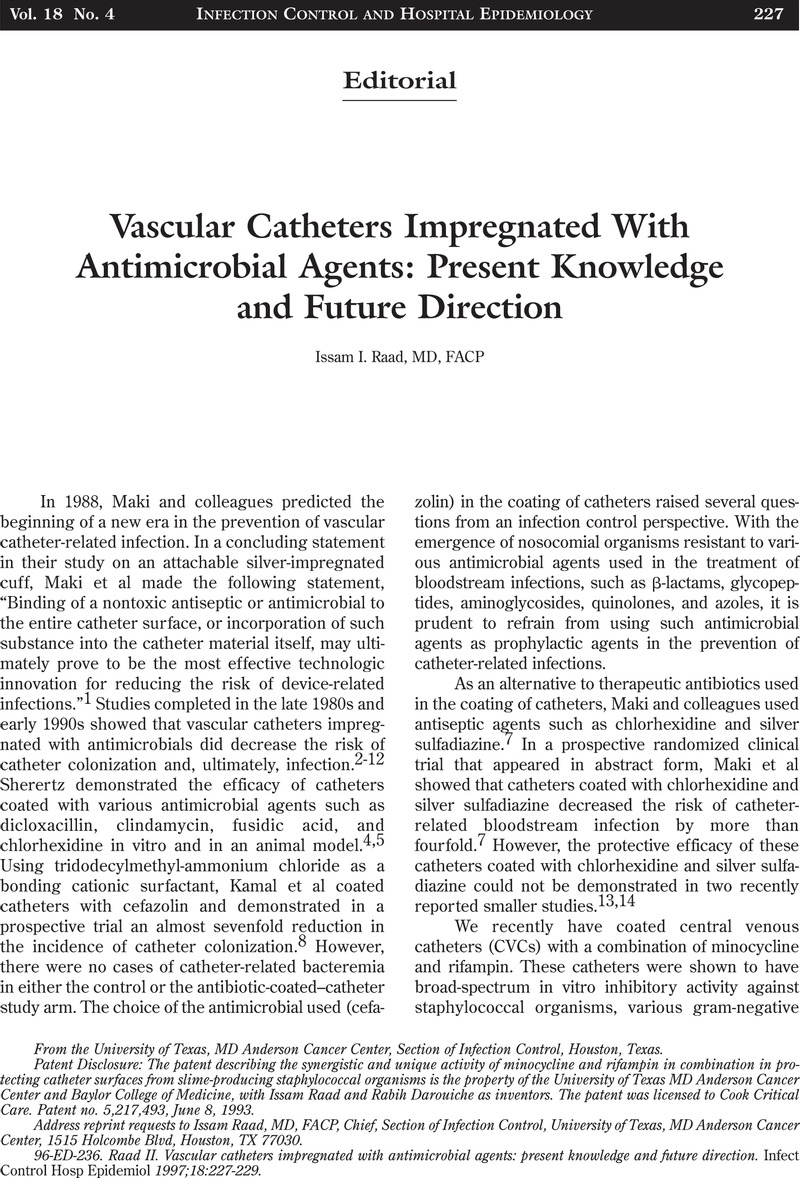Crossref Citations
This article has been cited by the following publications. This list is generated based on data provided by Crossref.
Spencer, R.C.
1999.
Novel methods for the prevention of infection of intravascular devices.
Journal of Hospital Infection,
Vol. 43,
Issue. ,
p.
S127.
Koldehoff, M.
and
Zakrzewski., J.L.
2004.
Taurolidine is effective in the treatment of central venous catheter-related bloodstream infections in cancer patients.
International Journal of Antimicrobial Agents,
Vol. 24,
Issue. 5,
p.
491.
Bosseray, Annick
and
Micoud, Max
2004.
Infections nosocomiales.
EMC - Maladies infectieuses,
Vol. 1,
Issue. 1,
p.
1.
Mansfield, Paul F.
and
Smith, David L.
2006.
Oncology.
p.
1443.
Jones, David S.
Garvin, Clare P.
Dowling, Denis
Donnelly, Kevin
and
Gorman, Sean P.
2006.
Examination of surface properties and in vitro biological performance of amorphous diamond‐like carbon‐coated polyurethane.
Journal of Biomedical Materials Research Part B: Applied Biomaterials,
Vol. 78B,
Issue. 2,
p.
230.



